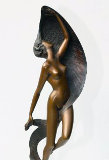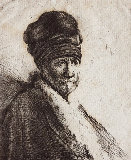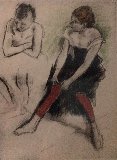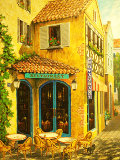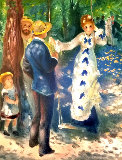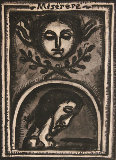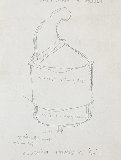




Femme Au Cep De Vigne, 4th Variante 1904
Pierre Auguste Renoir
Limited Edition Print : Lithograph in Black Ink on Vellum Paper
Size : 5.25x4 in | 13x10 cm
Framed : 23.5x20.5 in | 60x52 cm
Edition : From the edition of 950
Reduced
- 🔥Framed Stone Lithograph on Vellum $4,700
Year1904
Plate SignedSigned in Stone By the Artist
Condition Excellent
Framed with PlexiglassFrame With UV Protected Plexiglas
Purchased fromDealer 2002
Story / Additional InfoPrinted at the studio of Clot, Paris c.1905. First offered for sale by Vollard in 1919 in the series: Douze Lithographies Originales (referred as the Vollard Suite). The lithographs in this series were drawn on stone by Renoir in 1904 – 1905, and the editions were printed at this time. However, none of the prints were issued by Vollard until 1919. The stones were cancelled after the edition. Vollard tells an amusing story about Renoir and the lithographs in this series. Renoir was apparently very busy and Vollard was so anxious to get him to complete the prints that he used to actually follow Renoir around the town carrying a heavy litho stone ready for him to work on. By the first decade of this century Renoir was increasingly using the theme of the nude as a vehicle for the description of light and shade rather than as a linear or sculptural form. Thus his handling, in his brush drawings in particular, became loose and free so that the form of the figure blends and merges with the background shadows.
A Partial Listing of Public Collections: Bibliothèque Nationale, Paris; Art Institute of Chicago; Brooklyn Museum; Boston Public Library; Museum of Fine Arts, Boston; Grunwald; Metropolitan Museum of Art, NY; Museum of Modern Art, New York; New York Public Library; National Gallery of Art, Washington DC; Philadelphia Museum of Art.
Certificate of AuthenticityArt Brokerage
LID134710
Pierre Auguste Renoir - France
Art Brokerage: Park West Artist: Auguste Renoir. We can also assist with acquiring an original painting. 1841-1919 Frrench Artist, Pierre Auguste Renoir was an impressionist painter noted for his radiant, intimate paintings, particularly of the female nude. Recognized by critics as one of the greatest and most independent painters of his period, Renoir is noted for the harmony of his lines, the brilliance of his color, and the intimate charm of his wide variety of subjects. Unlike other impressionists he was as much interested in painting the single human figure or family group portraits as he was in landscapes; unlike them, too, he did not subordinate composition and plasticity of form to attempts at rendering the effect of light. Auguste Renoir was born in Limoges on February 25, 1841. As a child he worked in a porcelain factory in Paris, painting designs on china; at 17 he copied paintings on fans, lamp shades, and blinds. He studied painting formally in 1862-63 at the academy of the Swiss painter Charles Gabriel Gleyre in Paris. Renoir's early work was influenced by two French artists, Claude Monet in his treatment of light and the romantic painter Eugène Delacroix in his treatment of color. Renoir first exhibited his paintings in Paris in 1864, but he did not gain recognition until 1874, at the first exhibition of painters of the new impressionist school. One of the most famous of all impressionist works is Renoir's Le Bal au Moulin de la Galette (1876, Musée du Louvre, Paris), an open-air scene of a café, in which his mastery in figure painting and in representing light is evident. Outstanding examples of his talents as a portraitist are Madame Charpentier and Her Children (1878, The Metropolitan Museum of Art, New York City) and Jeanne Samary. Renoir fully established his reputation with a solo exhibition held at the Durand-Ruel Gallery in Paris in 1883. In 1887 he completed a series of studies of a group of nude female figures known as The Bathers (Philadelphia Museum of Art). These reveal his extraordinary ability to depict the lustrous, pearly color and texture of skin and to impart lyrical feeling and plasticity to a subject; they are unsurpassed in the history of modern painting in their representation of feminine grace. Many of his later paintings also treat the same theme in an increasingly bold rhythmic style. Listings wanted.















